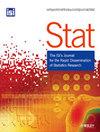Considerations in developing a financial model for an academic statistical consulting centre
IF 0.8
4区 数学
Q3 STATISTICS & PROBABILITY
引用次数: 0
Abstract
In operating an academic statistical consulting centre, it is essential to develop a strategy for covering the anticipated costs incurred, such as personnel, facilities, third‐party data, professional development and marketing, and for handling the revenues generated from sources such as university commitments, extramural grants, fees for service, internal memorandums of understanding and consulting courses. As such, this article describes each of these costs and revenue sources in turn, discusses how they vary over phases of a project and life cycles of a centre, provides a review of both historical and modern perspectives in the literature and includes illustrative examples of financial models from three different institutions. These points of consideration are meant to inform consulting groups who are interested in becoming either more or less centrally structured.为学术统计咨询中心制定财务模式的考虑因素
在运营学术统计咨询中心时,必须制定一项战略,以支付预期产生的成本,如人员、设施、第三方数据、专业发展和市场营销,并处理从大学承诺、校外赠款、服务费、内部谅解备忘录和咨询课程等来源产生的收入。因此,本文将逐一介绍这些成本和收入来源,讨论它们在项目的不同阶段和中心的生命周期中如何变化,对文献中的历史和现代观点进行回顾,并包括三个不同机构的财务模型示例。这些思考要点旨在为有意采用或不采用中央结构的咨询团体提供参考。
本文章由计算机程序翻译,如有差异,请以英文原文为准。
求助全文
约1分钟内获得全文
求助全文
来源期刊

Stat
Decision Sciences-Statistics, Probability and Uncertainty
CiteScore
1.10
自引率
0.00%
发文量
85
期刊介绍:
Stat is an innovative electronic journal for the rapid publication of novel and topical research results, publishing compact articles of the highest quality in all areas of statistical endeavour. Its purpose is to provide a means of rapid sharing of important new theoretical, methodological and applied research. Stat is a joint venture between the International Statistical Institute and Wiley-Blackwell.
Stat is characterised by:
• Speed - a high-quality review process that aims to reach a decision within 20 days of submission.
• Concision - a maximum article length of 10 pages of text, not including references.
• Supporting materials - inclusion of electronic supporting materials including graphs, video, software, data and images.
• Scope - addresses all areas of statistics and interdisciplinary areas.
Stat is a scientific journal for the international community of statisticians and researchers and practitioners in allied quantitative disciplines.
 求助内容:
求助内容: 应助结果提醒方式:
应助结果提醒方式:


